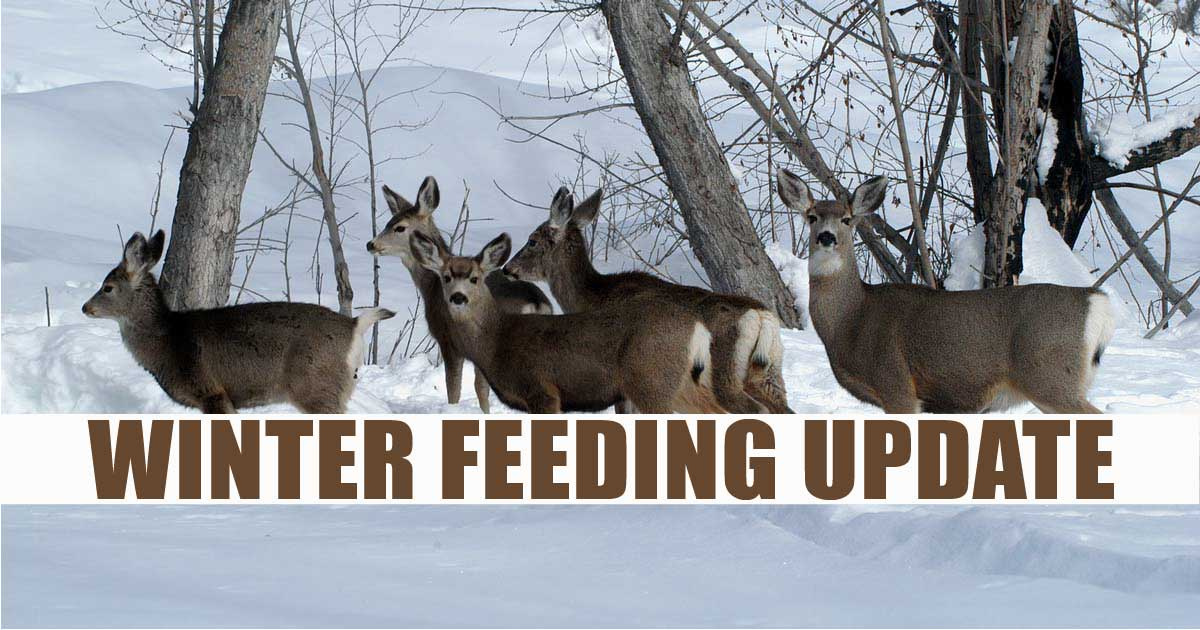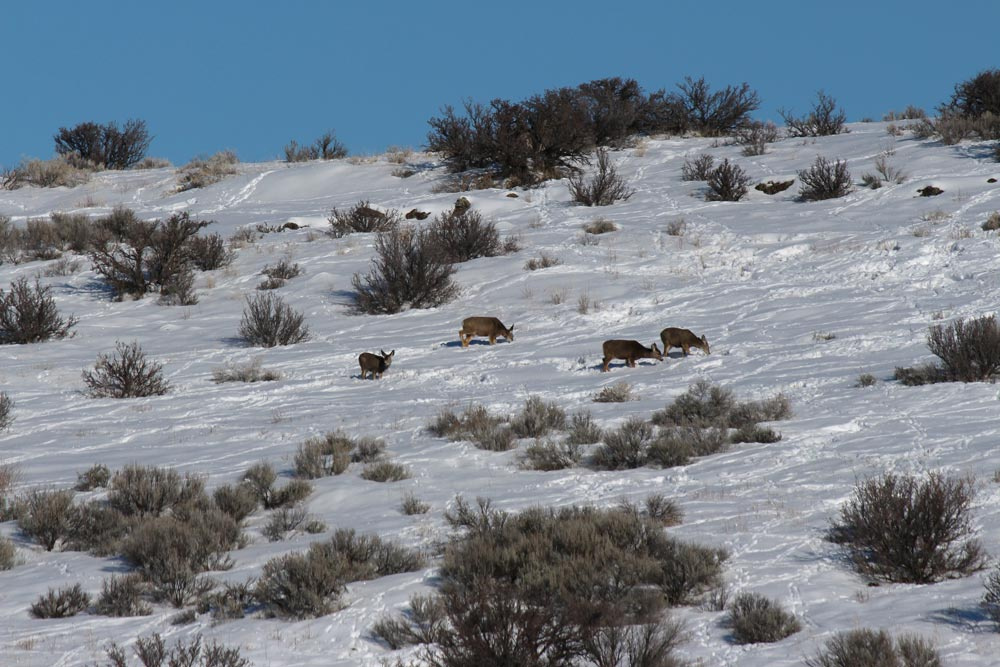
Big Game Winter Feeding in Idaho
When winter brings wildlife out of the hills and into contact with people, we may ask when is it appropriate to feed big game animals. The desire to feed animals is natural, yet from past experience, Fish and Game knows it is a complicated decision.
Fish and Game looks to natural forage to sustain big game populations. But when emergency conditions exist, winter feeding becomes an option. Four main conditions that can trigger Fish and Game winter feeding are:
Private property damage
To prevent damage to private property such as damage to stored agricultural crops like haystacks
Learn more
Learn more
Public safety concern
To prevent significant human safety issues such as elk congregating near a busy highway
Excessively harsh winter conditions
To prevent excessive mortality that would affect recovery of the herd such as those conditions where a high percentage of the adult females would be expected to die
Significant loss of winter forage
To prevent excessive mortality of a herd when winter forage is unavailable due to fire or unusual weather.
The agency’s policy and actions have evolved through decades of experience with winter feeding and is done with the best interest of Idaho’s big game populations.
After the devastating winters in the late 1990s, the Idaho Fish and Game Commission developed a policy and process to guide the agency’s decisions to feed or not to feed big game animals. Recently, the policy was updated to include the potential for disease, such as chronic wasting disease, as a consideration to feed or not feed.


